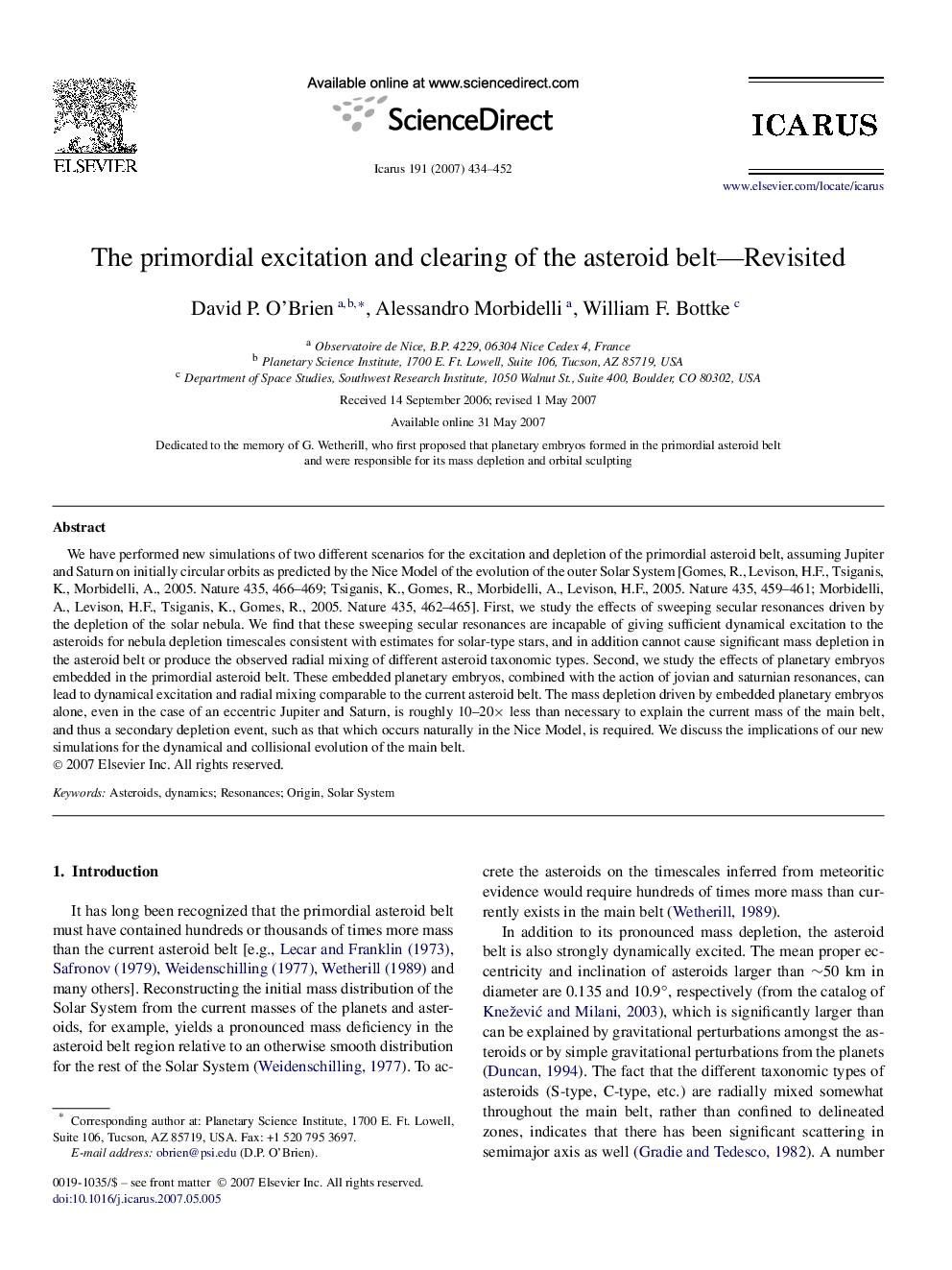| Article ID | Journal | Published Year | Pages | File Type |
|---|---|---|---|---|
| 1775465 | Icarus | 2007 | 19 Pages |
We have performed new simulations of two different scenarios for the excitation and depletion of the primordial asteroid belt, assuming Jupiter and Saturn on initially circular orbits as predicted by the Nice Model of the evolution of the outer Solar System [Gomes, R., Levison, H.F., Tsiganis, K., Morbidelli, A., 2005. Nature 435, 466–469; Tsiganis, K., Gomes, R., Morbidelli, A., Levison, H.F., 2005. Nature 435, 459–461; Morbidelli, A., Levison, H.F., Tsiganis, K., Gomes, R., 2005. Nature 435, 462–465]. First, we study the effects of sweeping secular resonances driven by the depletion of the solar nebula. We find that these sweeping secular resonances are incapable of giving sufficient dynamical excitation to the asteroids for nebula depletion timescales consistent with estimates for solar-type stars, and in addition cannot cause significant mass depletion in the asteroid belt or produce the observed radial mixing of different asteroid taxonomic types. Second, we study the effects of planetary embryos embedded in the primordial asteroid belt. These embedded planetary embryos, combined with the action of jovian and saturnian resonances, can lead to dynamical excitation and radial mixing comparable to the current asteroid belt. The mass depletion driven by embedded planetary embryos alone, even in the case of an eccentric Jupiter and Saturn, is roughly 10–20× less than necessary to explain the current mass of the main belt, and thus a secondary depletion event, such as that which occurs naturally in the Nice Model, is required. We discuss the implications of our new simulations for the dynamical and collisional evolution of the main belt.
